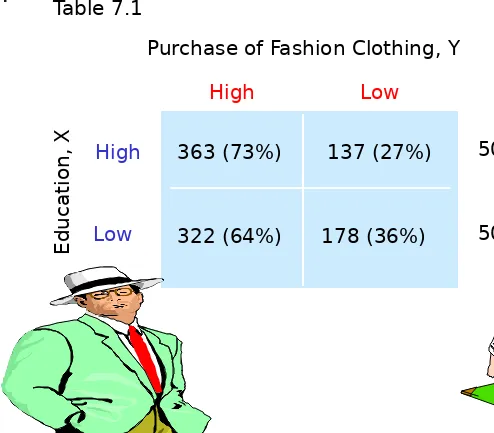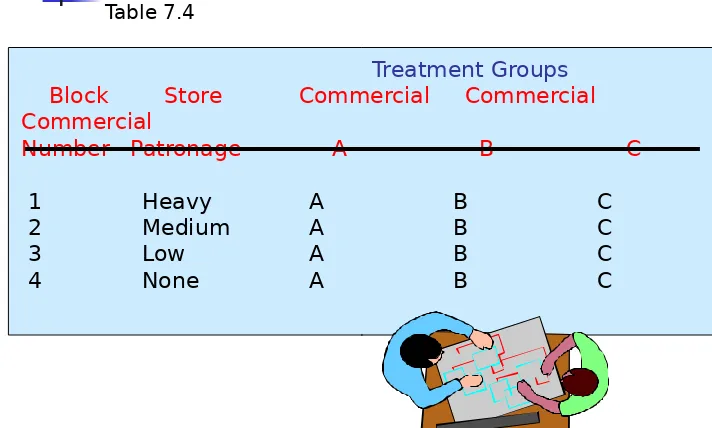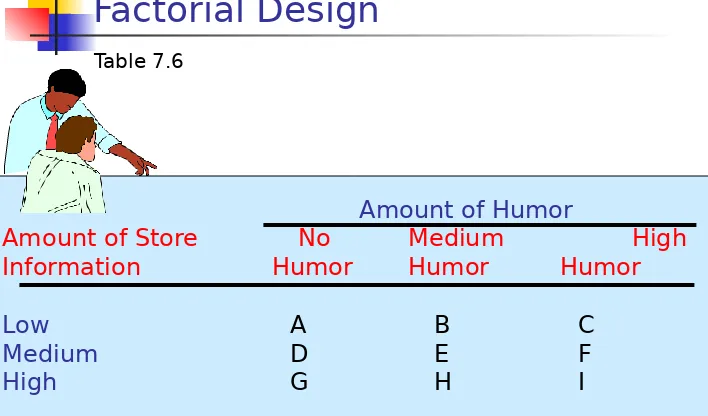Chapter Outline
1) Overview
2) Concept of Causality
3) Conditions for Causality
4) Definition of Concepts
5) Definition of Symbols
6) Validity in Experimentation
7) Extraneous Variables
Chapter Outline
9) A Classification of Experimental Designs
10) Pre-experimental Designs
11) True Experimental Designs
12) Quasi Experimental Designs
13) Statistical Designs
14) Laboratory vs. Field Experiments
15) Experimental vs. Non-experimental Designs
16) Limitations of Experimentation
Chapter Outline
18) Determining a Test Marketing Strategy
19) International Marketing Research
20) Ethics in Marketing Research
21) Internet and Computer Applications
22) Focus on Burke
23) Summary
Concept of Causality
A statement such as "X causes Y " will have the following meaning to an ordinary person and to a scientist.
____________________________________________________
Ordinary Meaning Scientific Meaning
____________________________________________________
X is the only cause of Y. X is only one of a number of possible causes of Y.
X must always lead to Y The occurrence of X makes the (X is a deterministic occurrence of Y more probable
cause of Y). (X is a probabilistic cause of Y).
It is possible to prove We can never prove that X is a that X is a cause of Y. cause of Y. At best, we can
infer that X is a cause of Y.
Conditions for Causality
Concomitant variation
is the extent to
which a cause,
X
, and an effect,
Y
, occur
together or vary together in the way
predicted by the hypothesis under
consideration.
The
time order of occurrence
condition
states that the causing event must occur
either before or simultaneously with the
effect; it cannot occur afterwards.
The
absence of other possible causal
factors
means that the factor or variable
being investigated should be the only
Purchase of Fashion Clothing and Education
High
High Low
363 (73%) 137 (27%)
[image:7.720.56.550.93.526.2]322 (64%) 178 (36%) Purchase of Fashion Clothing, Y Table 7.1
500 (100%)
500 (100%)
Low
E
d
u
ca
ti
o
n
,
X
7-8
Purchase of Fashion Clothing By
Income and Education
Definitions and Concepts
Independent variables
are variables or
alternatives that are manipulated and whose effects
are measured and compared, e.g., price levels.
Test units
are individuals, organizations, or other
entities whose response to the independent
variables or treatments is being examined, e.g.,
consumers or stores.
Dependent variables
are the variables which
measure the effect of the independent variables on
the test units, e.g., sales, profits, and market
shares.
Extraneous variables
are all variables other than
Experimental Design
An
experimental design
is a set of
procedures specifying
the test units and how these units are to
be divided into homogeneous
subsamples,
what independent variables or
treatments are to be manipulated,
what dependent variables are to be
measured, and
Validity in Experimentation
Internal validity
refers to whether the
manipulation of the independent variables
or treatments actually caused the
observed effects on the dependent
variables. Control of extraneous variables
is a necessary condition for establishing
internal validity.
External validity
refers to whether the
cause-and-effect relationships found in
the experiment can be generalized. To
what populations, settings, times,
Extraneous Variables
History
refers to specific events that are
external to the experiment but occur at the
same time as the experiment.
Maturation
(
MA
) refers to changes in the test
units themselves that occur with the passage of
time.
Testing effects
are caused by the process of
experimentation. Typically, these are the
effects on the experiment of taking a measure
on the dependent variable before and after the
presentation of the treatment.
Extraneous Variables
In the
interactive testing effect
(IT), a prior
measurement affects the test unit's response to
the independent variable.
Instrumentation
(I) refers to changes in the
measuring instrument, in the observers or in the
scores themselves.
Statistical regression
effects (SR) occur when
test units with extreme scores move closer to the
average score during the course of the
experiment.
Selection bias
(SB) refers to the improper
assignment of test units to treatment conditions.
Mortality
(MO) refers to the loss of test units
Controlling Extraneous Variables
Randomization
refers to the random assignment
of test units to experimental groups by using
random numbers. Treatment conditions are also
randomly assigned to experimental groups.
Matching
involves comparing test units on a set
of key background variables before assigning
them to the treatment conditions.
Statistical control
involves measuring the
extraneous variables and adjusting for their
effects through statistical analysis.
Design control
involves the use of experiments
Designs
Pre-experimental designs do not
employ randomization procedures to
control for extraneous factors: the
one-shot case study, the one-group
pretest-posttest design, and the static-group.
In true experimental designs, the
researcher can randomly assign test
units to experimental groups and
7-16
A Classification of Experimental
Designs
Quasi-experimental designs
result
when the researcher is unable to achieve
full manipulation of scheduling or
allocation of treatments to test units but
can still apply part of the apparatus of
true experimentation: time series and
multiple time series designs.
A
statistical design
is a series of basic
experiments that allows for statistical
control and analysis of external variables:
randomized block design, Latin square
One-Shot Case Study
X 0
1
A single group of test units is exposed to a
treatment
X.
A single measurement on the dependent
variable is taken (
0
1).
There is no random assignment of test
units.
The one-shot case study is more
Design
0
1X 0
2
A group of test units is measured
twice.
There is no control group.
The treatment effect is computed as
0
2–
0
1.
The validity of this conclusion is
questionable since extraneous
Static Group Design
EG:
X
0
1CG:
0
2
A two-group experimental design.
The experimental group (EG) is exposed to
the treatment, and the control group (CG) is
not.
Measurements on both groups are made
only after the treatment.
Test units are not assigned at random.
The treatment effect would be measured as
Pretest-Posttest Control Group Design
EG: R 01 X 02
CG: R 03 04
Test units are randomly assigned to either the experimental
or the control group.
A pretreatment measure is taken on each group. The treatment effect (TE) is measured as:(0
2 - 01) - (04 - 03). Selection bias is eliminated by randomization.
The other extraneous effects are controlled as follows: 02 – 01= TE + H + MA + MT + IT + I + SR + MO
04 – 03= H + MA + MT + I + SR + MO
= EV (Extraneous Variables)
The experimental result is obtained by:
(02 - 01) - (04 - 03) = TE + IT
7-22
Posttest-Only Control Group
Design
EG :
R
X
0
1CG :
R
0
2
The treatment effect is obtained by
TE
=
0
1-
0
2
Except for pre-measurement, the
Time Series Design
0
10
20
30
40
5X
0
60
70
80
90
10
There is no randomization of test
units to treatments.
The timing of treatment
presentation, as well as which test
units are exposed to the
Multiple Time Series Design
EG :
0
10
20
30
40
5X
0
60
70
80
90
10CG :
0
10
20
30
40
50
60
70
80
90
10
If the control group is carefully
selected, this design can be an
improvement over the simple time
series experiment.
Can test the treatment effect twice:
against the pretreatment
Statistical Designs
Statistical designs
consist of a series of basic
experiments that allow for statistical control and
analysis of external variables and offer the following
advantages:
The effects of more than one independent
variable can be measured.
Specific extraneous variables can be statistically
controlled.
Economical designs can be formulated when
each test unit is measured more than once.
The most common statistical designs are the
Randomized Block Design
Is useful when there is only one
major external variable, such as
store size, that might influence the
dependent variable.
The test units are blocked, or
grouped, on the basis of the external
variable.
By blocking, the researcher ensures
Randomized Block Design
Treatment Groups
Block Store Commercial Commercial
Commercial
Number Patronage A B C
1
Heavy
A
B
C
2
Medium
A
B
C
3
Low
A
B
C
4
None
A
B
C
[image:27.720.0.712.89.517.2]Latin Square Design
Allows the researcher to statistically control two
noninteracting external variables as well as to manipulate the independent variable.
Each external or blocking variable is divided into an
equal number of blocks, or levels.
The independent variable is also divided into the same
number of levels.
A Latin square is conceptualized as a table (see Table
7.5), with the rows and columns representing the blocks in the two external variables.
The levels of the independent variable are assigned to
the cells in the table.
The assignment rule is that each level of the
Latin Square Design
Table 7.5
Interest in the Store
Store Patronage High Medium Low
Heavy B A C
Medium C B A
Factorial Design
Is used to measure the effects of
two or more independent variables
at various levels.
A factorial design may also be
conceptualized as a table.
In a two-factor design, each level
Factorial Design
Table 7.6
Amount of Humor
Amount of Store No Medium
High
Information
Humor Humor Humor
Low
A
B
C
Medium
D
E
F
7-32
Laboratory versus Field
Experiments
Factor
Laboratory Field
Environment Artificial Realistic
Control High Low Reactive Error High Low
Demand Artifacts High Low
Internal Validity High Low External Validity Low High
Time Short Long
Number of Units Small Large
Ease of Implementation High Low Cost Low
High
Limitations of Experimentation
Experiments can be time consuming,
particularly if the researcher is interested in
measuring the long-term effects.
Experiments are often expensive. The
requirements of experimental group, control
group, and multiple measurements
significantly add to the cost of research.
Experiments can be difficult to administer.
It may be impossible to control for the
effects of the extraneous variables,
particularly in a field environment.
Competitors may deliberately contaminate
7-34
Competition
Overall Marketing Strategy
S o c io -C u lt u ra l E n v ir o n m e n t N e e d f o r S e c re c y
New Product Development Research on Existing Products Research on other Elements
Simulated Test Marketing
Controlled Test Marketing
Standard Test Marketing
National Introduction S to p a n d R e e v a lu a te -ve -ve -ve -ve Very +ve Other Factors Very +ve Other Factors Very +ve Other Factors
Markets
Test Markets should have the following qualities
:
1) Be large enough to produce meaningful projections. They should contain at least 2% of the potential
actual population.
2) Be representative demographically.
3) Be representative with respect to product consumption behavior.
4) Be representative with respect to media usage. 5) Be representative with respect to competition.
6) Be relatively isolated in terms of media and physical distribution.




